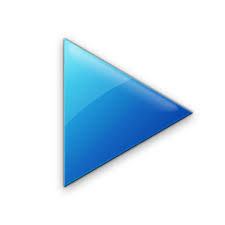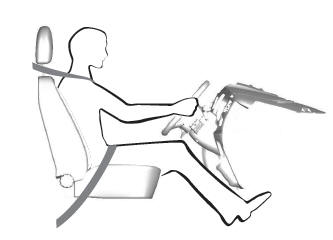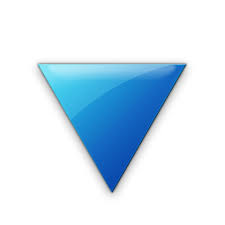Ford Escape: Rear Drive Halfshafts / Diagnosis and Testing - Rear Drive Halfshafts
Preliminary Inspection
-
Visually inspect the CV joints, housing, boots, and clamps for obvious signs of mechanical damage.
-
If an obvious cause for an observed or reported concern is
found, correct the cause (if possible) before proceeding to the next
step
-
If the cause is not visually evident, verify the symptom and REFER to Symptom Chart: NVH.
Symptom Chart(s)
Diagnostics in this manual assume a certain skill level and knowledge of Ford-specific diagnostic practices.
REFER to: Diagnostic Methods (100-00 General Information, Description and Operation).
Symptom Chart: NVH
Symptom Chart
| Condition | Actions |
|---|---|
| Driveline clunk - loud clunk when shifting from REVERSE to DRIVE | GO to Pinpoint Test A |
| Driveline clunk — occurs as the vehicle starts to move forward following a stop | GO to Pinpoint Test B |
| Grunting — normally associated with a shudder experienced during acceleration from a complete stop | GO to Pinpoint Test C |
| Driveline vibration - occurs at cruising speeds | GO to Pinpoint Test D |
Pinpoint Tests
 PINPOINT TEST A: DRIVELINE CLUNK- LOUD CLUNK WHEN SHIFTING FROM REVERSE TO DRIVE
PINPOINT TEST A: DRIVELINE CLUNK- LOUD CLUNK WHEN SHIFTING FROM REVERSE TO DRIVE|
Normal Operation and Fault Conditions Halfshafts transmit rotary motion through constant velocity joints in a uniform manner. The outer CV joints use balls, have no length compensation and engage in the wheel hubs. The inner CV joints use balls, have length compensation, and are locked in to the differential by a snap-ring. The inner CV joints use balls, have length compensation, and are locked in to the differential by a snap-ring. Possible Sources
|
||||
| A1 CHECK THE HUB NUT TORQUE | ||||
Is the hub nut loose?
|
||||
| A2 CHECK THE TORQUE ON SUSPENSION AND STEERING SYSTEM FASTENERS | ||||
Is the any of the suspension and steering fastener loose?
|
||||
| A3 CHECK THE CONSTANT VELOCITY (CV) BOOTS AND JOINTS FOR WEAR OR DAMAGE | ||||
Was damage found?
|
 PINPOINT TEST B: DRIVELINE CLUNK — OCCURS AS THE VEHICLE STARTS TO MOVE FORWARD FOLLOWING A STOP
PINPOINT TEST B: DRIVELINE CLUNK — OCCURS AS THE VEHICLE STARTS TO MOVE FORWARD FOLLOWING A STOP |
Normal Operation and Fault Conditions Halfshafts transmit rotary motion through constant velocity joints in a uniform manner. The outer CV joints use balls, have no length compensation and engage in the wheel hubs. The inner CV joints use balls, have length compensation, and are locked in to the differential by a snap-ring. The inner CV joints use balls, have length compensation, and are locked in to the differential by a snap-ring. Possible Sources
|
||||
| B1 CHECK FOR LOOSE HUB NUT | ||||
Are any hub nuts loose?
|
||||
| B2 CHECK THE TORQUE ON SUSPENSION AND STEERING SYSTEM FASTENERS | ||||
Is the any of the suspension and steering fastener loose?
|
||||
| B3 CHECK THE CONSTANT VELOCITY (CV) BOOTS AND JOINTS FOR WEAR OR DAMAGE | ||||
Was damage found?
|
 PINPOINT TEST C: GRUNTING — NORMALLY ASSOCIATED WITH A SHUDDER EXPERIENCED DURING ACCELERATION FROM A COMPLETE STOP
PINPOINT TEST C: GRUNTING — NORMALLY ASSOCIATED WITH A SHUDDER EXPERIENCED DURING ACCELERATION FROM A COMPLETE STOP |
Normal Operation and Fault Conditions Halfshafts transmit rotary motion through constant velocity joints in a uniform manner. The outer CV joints use balls, have no length compensation and engage in the wheel hubs. The inner CV joints use balls, have length compensation, and are locked in to the differential by a snap-ring. The inner CV joints use balls, have length compensation, and are locked in to the differential by a snap-ring. Possible Sources
|
||||
| C1 CHECK THE OUTER CONSTANT VELOCITY (CV) JOINT FOR CORRECT SEATING INTO THE HUB | ||||
Is the outer Constant Velocity (CV) joint seated correctly into the hub?
|
 PINPOINT TEST D: DRIVELINE VIBRATION - OCCURS AT CRUISING SPEEDS
PINPOINT TEST D: DRIVELINE VIBRATION - OCCURS AT CRUISING SPEEDS |
Normal Operation and Fault Conditions Halfshafts transmit rotary motion through constant velocity joints in a uniform manner. The outer CV joints use balls, have no length compensation and engage in the wheel hubs. The inner CV joints use balls, have length compensation, and are locked in to the differential by a snap-ring. The inner CV joints use balls, have length compensation, and are locked in to the differential by a snap-ring. Possible Sources
|
||||
| D1 CHECK THE OUTER CONSTANT VELOCITY (CV) JOINT FOR CORRECT SEATING INTO THE HUB | ||||
Is the outer Constant Velocity (CV) joint seated correctly into the hub?
|
Differential Seals
NOTICE: When installing shafts, do not allow splines to contact seals during installation or damage to the seals may occur.
Halfshaft seals are susceptible to the same types of damage as drive pinion seals if incorrectly installed. The seal bore must be clean and the lip handled carefully to avoid cutting or tearing it. The seal journal surface must be free of nicks, gouges and rough surface texture.
For information on differential seals,
REFER to: Rear Halfshaft Seal (205-02 Rear Drive Axle/Differential, Removal and Installation).
 Removal and Installation - Rear Halfshaft
Removal and Installation - Rear Halfshaft
Special Tool(s) /
General Equipment
100-001
(T50T-100-A)
Slide Hammer
205-832Remover, HalfshaftTKIT-2006C-FFMFLMTKIT-2006C-LMTKIT-2006C-ROW
Removal
NOTICE:
Never pick up or hold the halfshaft by only the inner or
outer Constant Velocity (CV) joint...
Other information:
Ford Escape 2020-2025 Owners Manual: Washers
Washer Precautions WARNING: If you operate your vehicle in temperatures below 41°F (5°C), use washer fluid with antifreeze protection. Failure to use washer fluid with antifreeze protection in cold weather could result in impaired windshield vision and increase the risk of injury or accident...
Ford Escape 2020-2025 Service Manual: Removal and Installation - Charge Port - Plug-In Hybrid Electric Vehicle (PHEV)
Removal WARNING: To prevent the risk of high-voltage shock, always follow precisely all warnings and service instructions, including instructions to depower the system. The high-voltage system utilizes approximately 450 volts DC, provided through high-voltage cables to its components and modules...
Categories
- Manuals Home
- 4th Generation Ford Escape Owners Manual
- 4th Generation Ford Escape Service Manual
- Plug-In Hybrid Electric Vehicle Drive Modes
- Description and Operation - Identification Codes
- Locating the Pre-Collision Assist Sensors
- New on site
- Most important about car
Sitting in the Correct Position

When you use them properly, the seat, head restraint, seatbelt and airbags will provide optimum protection in the event of a crash.

 PINPOINT TEST A: DRIVELINE CLUNK- LOUD CLUNK WHEN SHIFTING FROM REVERSE TO DRIVE
PINPOINT TEST A: DRIVELINE CLUNK- LOUD CLUNK WHEN SHIFTING FROM REVERSE TO DRIVE